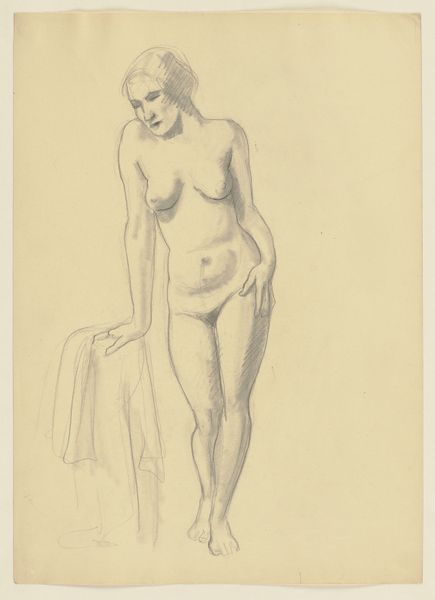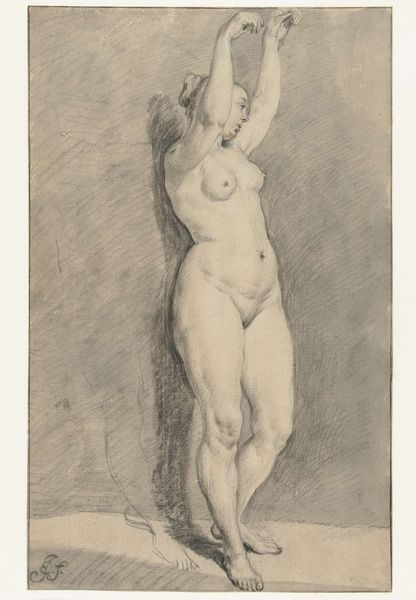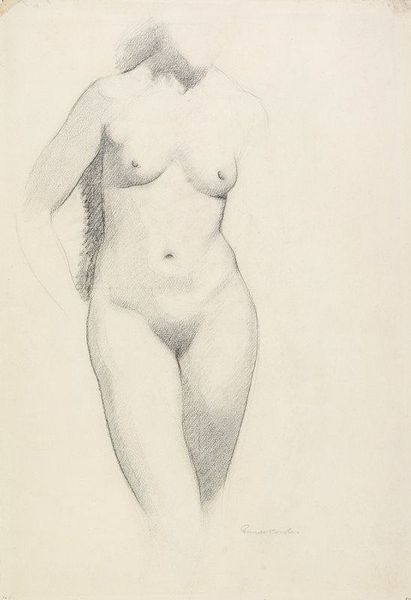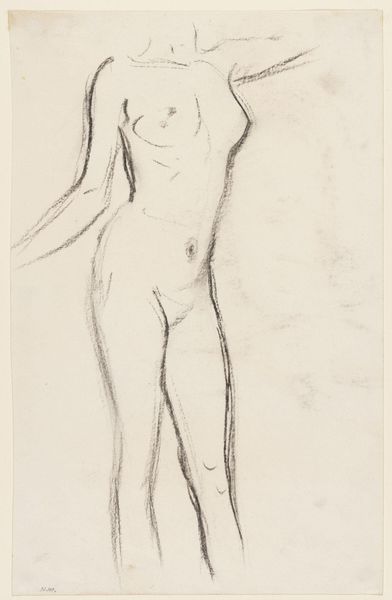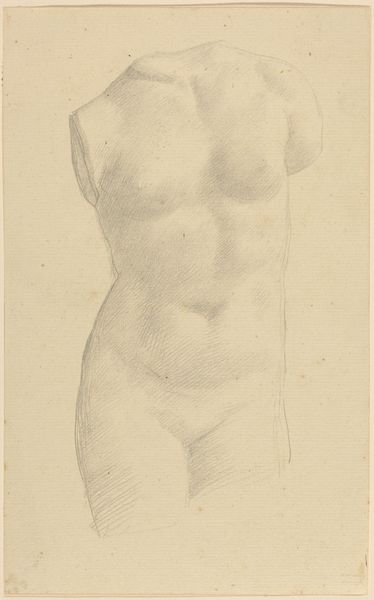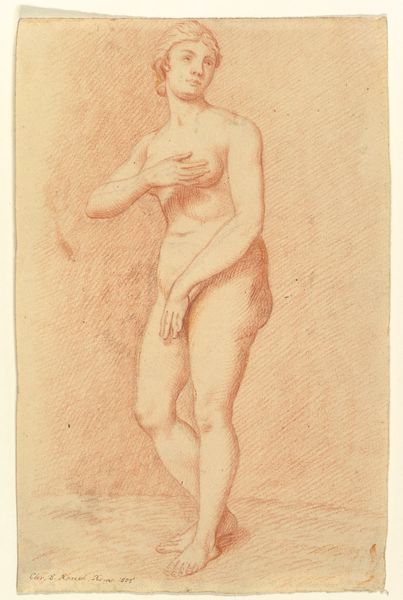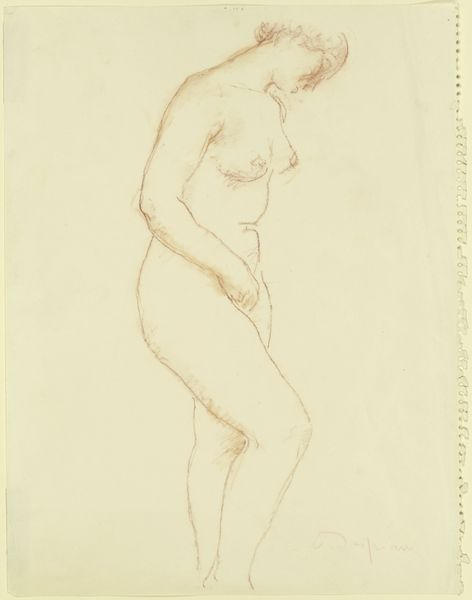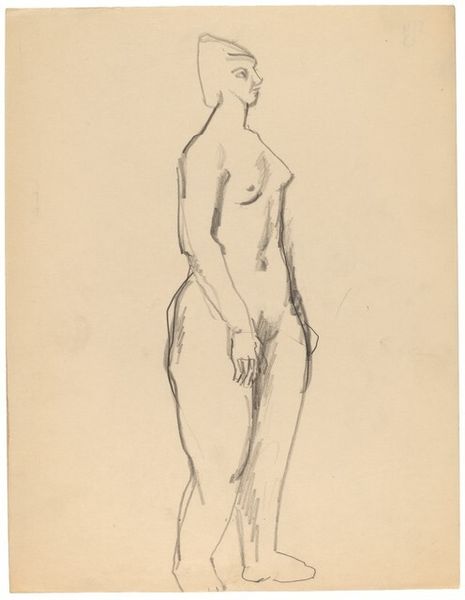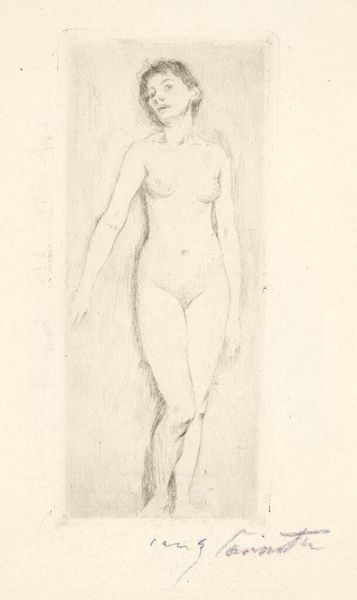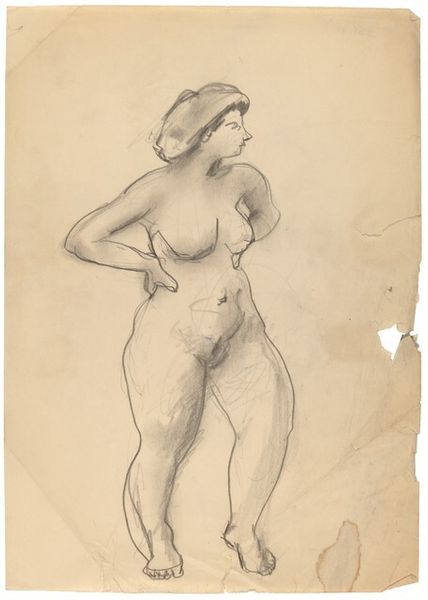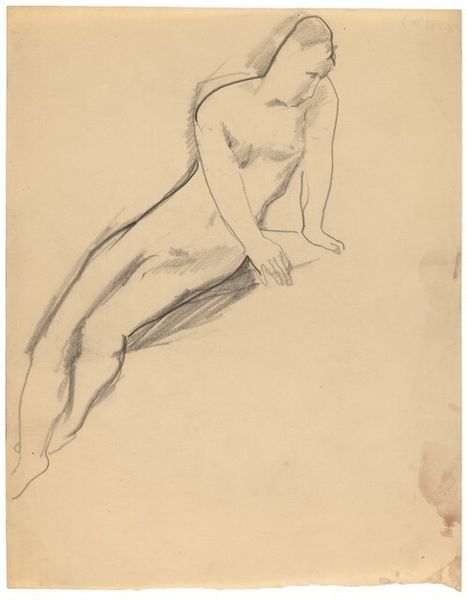
drawing, pencil
#
portrait
#
drawing
#
pencil
#
portrait drawing
#
academic-art
#
nude
Dimensions: 302 mm (height) x 204 mm (width) (bladmaal)
Curator: Hans Smidth created this drawing, "Standing Female Model," sometime in the 1860s. It's rendered in pencil. Editor: My immediate impression is one of subdued power. The lack of dramatic lighting, the slightly downward gaze—it feels intimate and reserved, rather than overtly sexualized, even given the subject. Curator: Exactly. And while nudes are often automatically assigned a male gaze, in this academic study, Smidth presents a woman rendered with a surprising lack of idealization, especially for the period. It's a human form, not an object. I’m interested in what that signifies. How is it disrupting the aesthetic regime? Editor: There’s also the classical reference. The hair, the contrapposto stance - slightly recalling Venus Pudica. Even in the absence of obvious mythic symbols, those associations linger. It gives her that quality of existing somehow outside of our contemporary setting. I suppose that in the academic world those tropes helped them elevate a nude form to be 'Art.' Curator: It allows for an interesting dialectic, right? There's an assertion of her corporeal presence, but tempered with historical idealization. What does it say that even now our eyes read the tropes? What does this interplay, of the “everyday woman” versus what she signifies about beauty as an ideology, reveal about what it meant to be a woman in Denmark in the 1860s? Editor: We’ve clearly evolved on that front. Looking closer at the rendering technique, I’m fascinated by the subtle use of shadow to denote volume. The hatching on the left side of her body suggests depth without overpowering the delicate linework defining her form. She's almost fading into the page behind her. Curator: It certainly highlights the work’s status as a study, rather than a pronouncement, and perhaps, makes a connection between historical memory and the woman portrayed here. Editor: Perhaps so. And that very subtlety makes me feel as though it makes the work timeless, or it certainly holds our interest longer than one more of those high-drama heroic oil paintings. Curator: It does ask that the viewer participates more fully. What can this image of everyday academic art reveal about a bygone culture? And I think we’ve given our listeners several perspectives to start exploring that with, too.
Comments
No comments
Be the first to comment and join the conversation on the ultimate creative platform.
